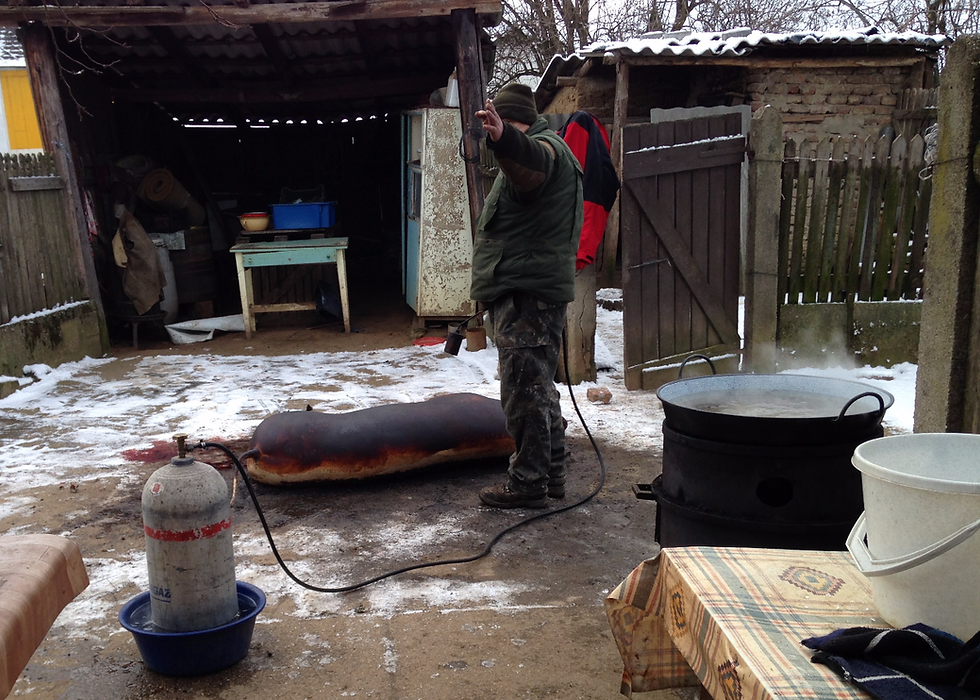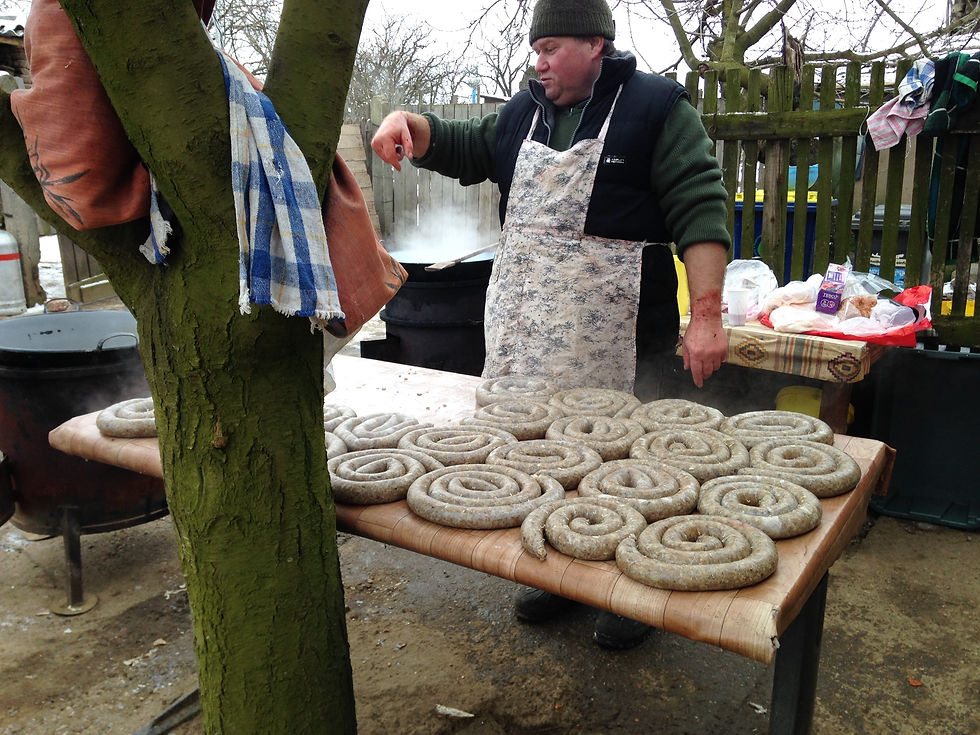The Less There Is To Justify A Tradition...
- audreymehl

- Jan 24, 2016
- 4 min read
During my especially interesting schedule, I find myself researching Hungarians and their language. Sometimes I am doing this in the teacher’s room at school. When I happen upon a site that features pictures of Hungarians doing things that might seem strange to me, I usually attract teachers who happen to be looking over my shoulder. I get a few chuckles, some explanation of what is going on and they reassure me that they realize their way of life is much different than mine. This, consequently, is the reason why I enjoy researching them. I also like doing my Hungarian homework at school because I have a teacher readily at hand. Whether he/she is 12 or 50 something is of no consequence at the rate that I’m learning.
Anyway, I was thinking about how Hungarian is like no other language I have ever hear or studied, and felt that there HAD to be some sort of language category that it falls under. I found a site (Estonia.eu) that had some pretty interesting information on the topic. Hungarians fall under the Finno-Ugric category. They live within an area that reaches from Norway to the Ob river region in the East and the Danube in the South. Speakers of Finno-Ugric languages represent about 24 different peoples. They are mostly the aboriginal inhabitants of the territories they live in but, oddly enough, most of them have never had their own nation state. Hungarians, of course, do have their own independent state.
Even though there are similarities among the Finno-Ugric languages, they are not mutually understandable. There might be some words that are alike, but their greatest similarities come from their language structure. Interestingly enough, this unique way of constructing language influences the Finno-Ugric peoples’ frame of mind and the way they look at the world around them. The closest relatives of the Hungarians are the Khants and Mansis in Siberia, including their neighbors the Samoyeds. For this reason, Hungarians have both European and Mongolian physical characteristics. Most Finno-Ugrians are Christians of various denominations. Hungarians are mostly Catholics, although there is a significant number of Calvinists and Lutherans.
The main forum of the Finno-Ugrians is the World Congress of Finno-Ugric Peoples, which has met every four years since 1992. Its primary objective is to preserve and develop the Finno-Ugric peoples and their cultures as part of the “heritage of mankind as a whole.” Due to the fact that much of the surrounding territory of Hungary used to be Hungarian speaking, the language is spoken today in much of Romania, Slovakia and Austria. In fact, I was recently in Slovakia and could say things in Hungarian and was perfectly understood.
So there you have it. Now you’ve been enlightened on the subject of Hungarian linguistics and culture. Speaking of their culture, I attended a much-anticipated pig killing last weekend. Yes, of course I took pictures. Everyone was excited to show me what village life was like for a Hungarian. “City people” really get into pig killings because they only participate in one about every four years, depending on who they are. Others grudgingly go because they think it’s a little barbaric but their parents make them. The day started at around 6 a.m. when I left my flat for a village (Napkor) not too far away from Nyiregyhaza. The first thing to be done is to take a shot of palinka, grab a big propane tank, hook a blowtorch to the end and burn the hair and yuck off of the outside of the pig. Delicious.

Then (it gets a little graphic) they grab a big axe and split the pig down the middle (sorry,sorry,sorry), all the while cutting off the ears to dip in salt and give to Audrey who will obviously be horrified but will take a bite and smile anyway because everyone is staring. Then, we go inside to drink some hot wine (tea for the driver) beside the warm stoves. The men are obviously enjoying themselves as they are experienced and like to see the inexperienced squirm in their boots. Some guys at the pig killing I attended had done 5 pig killings in the last week.

All the yucky, inedible parts are given to the chickens and blood is collected in a bowl to eat later. I feel like I’m going through steps for a bizarre cooking show. We eat a breakfast of stuffed cabbage and I skirt around the edges of the action for a while until they’ve separated all the good parts from the bad parts of the pig. Lunch consisted of, well, pig. I ate liver, tongue, stomach, blood, etc. To be honest, the tongue was pretty good. After lunch, they weren’t making me cut any meat up anymore, so we visited some more pigs that were still alive. I had no idea it only took 6 months for a pig to be fully grown. I have never seen bigger pigs than the ones I saw last weekend.

I obviously don’t have a lot of experience with pigs, but man, they looked giant to me. The farmer who showed us around loved his pigs. The little piglets were pretty adorable. When I came back to the butcher party, sausages were being made, one after the other.

I ran inside to warm my toes. Eventually, the chores were exhausted. I was sent home with a full stomach and a bag full of pig.
This tradition has been around for a looooong time and is usually celebrated around the Christmas season. Some might question whether it’s a tradition worth keeping. In an odd way, it brings family and village together. Having a whole pig to share was a big luxury years ago. Having a pig, along with pickled vegetables, was a way to insure you had food for the winter. Why not celebrate your success with those you love for an entire day? The city folk might not like it, but that won’t stop villagers all over Hungary from having a good ol pig killing.
Often the less there is to justify a traditional custom, the harder it is to get rid of it.
- Mark Twain
Comments